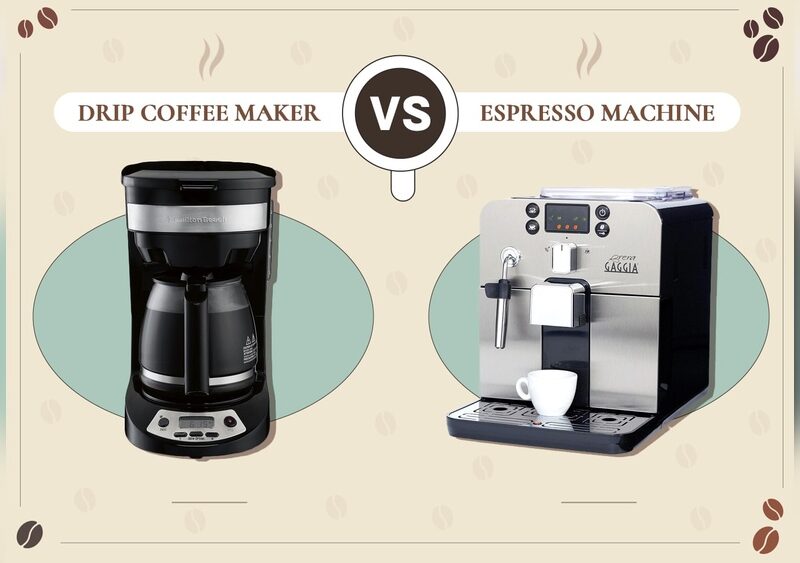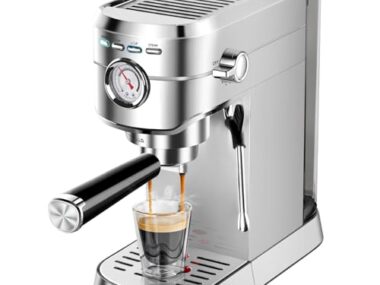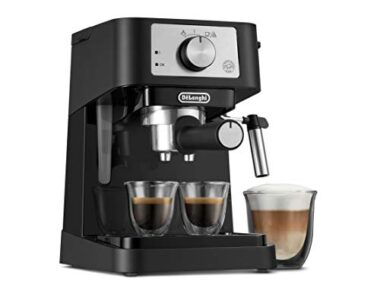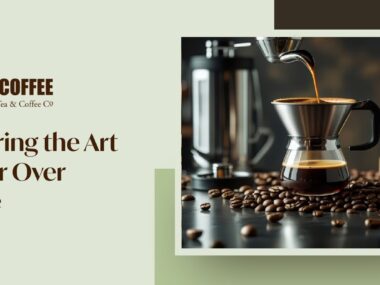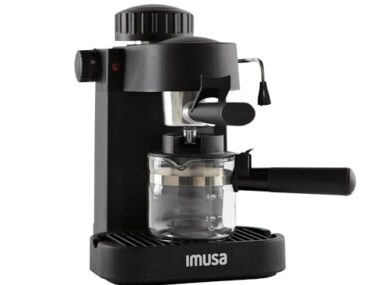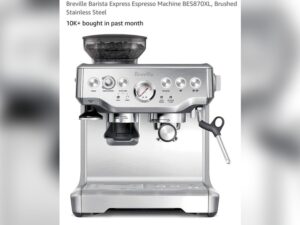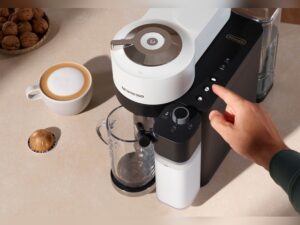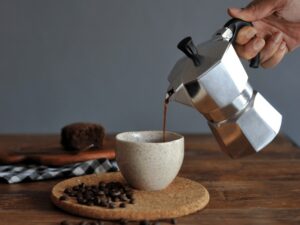Are you confused about whether an espresso machine and a coffee machine are the same? You’re not alone.
Many people use these terms interchangeably, but knowing the difference can change the way you enjoy your daily cup. Understanding how each machine works helps you pick the right one for your taste and lifestyle. Keep reading, and by the end, you’ll feel confident choosing the perfect coffee maker that suits your needs.

Credit: cornercoffeestore.com
Espresso Machine Basics
Espresso machines are a special kind of coffee maker. They make a strong, rich coffee called espresso. Many people wonder if an espresso machine is the same as a regular coffee machine. Understanding the basics of espresso machines helps to see the difference clearly.
These machines use pressure to brew coffee fast. The result is a small cup with a thick layer on top called crema. Espresso is the base for many popular drinks like lattes and cappuccinos. Learning how espresso machines work and the types available gives a good start.
How Espresso Machines Work
Espresso machines push hot water through finely ground coffee. This happens under high pressure, usually 9 bars or more. The pressure extracts oils and flavors fast. It takes about 25 to 30 seconds for a shot of espresso. The crema forms from the pressure and hot water mixing with coffee oils.
Most machines have a portafilter to hold coffee grounds. The water heats in a boiler or thermoblock. When you start the machine, water is forced through coffee. This method is different from drip coffee makers. Drip machines use gravity and take longer to brew.
Types Of Espresso Machines
Espresso machines come in many styles. Manual machines need you to control water pressure by hand. They require skill but offer full control. Semi-automatic machines use electric pumps but let you stop the shot. They balance ease and control well.
Automatic machines control water volume automatically. You just press a button. Super-automatic machines grind, tamp, brew, and clean themselves. These are the easiest to use but cost more. Each type suits different needs and budgets.
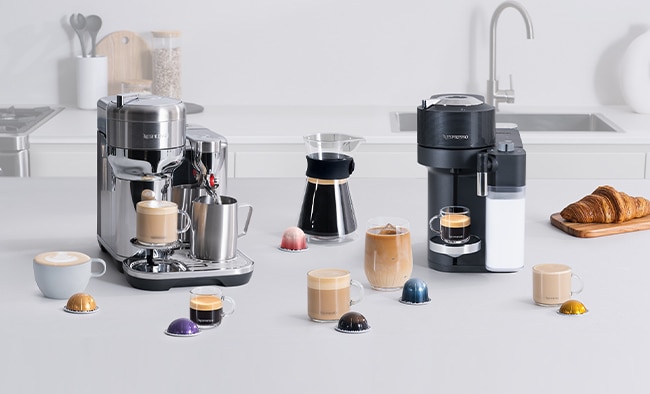
Credit: www.nespresso.com
Coffee Machine Essentials
Coffee machines come in many forms and styles. Each type uses a different way to brew coffee. Knowing these basics helps choose the right machine for your needs. Some machines make espresso, while others brew regular coffee.
Understanding the brewing methods and machine types clears up confusion. It shows how espresso machines differ from regular coffee machines. This knowledge makes buying easier and improves your coffee experience.
Brewing Methods In Coffee Machines
Drip brewing is common in many coffee machines. Hot water slowly passes through ground coffee. This method produces mild and smooth coffee.
Espresso machines use high pressure to force hot water through finely ground coffee. This creates a strong and rich coffee shot with crema on top.
Other methods include French press and pour-over. These use different techniques to extract flavors from coffee grounds. Each method changes taste and strength.
Popular Coffee Machine Types
Drip coffee makers are popular for their ease and convenience. They brew multiple cups at once. Good for families or offices.
Espresso machines are designed to make espresso shots. They often include steam wands for frothing milk. Perfect for lattes and cappuccinos.
Single-serve machines use pods or capsules. They brew one cup at a time quickly. Great for people who want variety and speed.
French press and pour-over devices are manual but simple. They require more time and effort but deliver rich flavor.
Key Differences In Brewing
The brewing process differs greatly between espresso machines and regular coffee machines. These differences affect the taste, strength, and texture of the coffee. Understanding these key brewing factors helps you choose the right machine for your needs.
Pressure And Temperature Variations
Espresso machines use high pressure to brew coffee. They force hot water through finely ground coffee at about 9 bars of pressure. This creates a rich and thick coffee with crema on top.
Regular coffee machines use gravity to drip hot water over coffee grounds. The pressure is much lower, almost none. The water temperature is usually around 195°F to 205°F. This produces a lighter, milder coffee.
Grind Size And Coffee Beans
Espresso machines require a very fine grind. The coffee must be compact so water passes through slowly. This brings out strong flavors and a bold aroma.
Coffee machines use a coarser grind. Water flows more freely through these grounds. This creates a smoother and less intense coffee taste.
Taste And Texture Contrast
The taste and texture of coffee from an espresso machine differ greatly from a regular coffee machine. These differences shape the entire drinking experience. The way each machine brews coffee affects flavor and mouthfeel. Understanding these contrasts helps you choose the right coffee maker for your taste.
Flavor Profiles
Espresso machines use high pressure to extract coffee quickly. This process pulls more oils and solids from the coffee grounds. The result is a strong, rich, and intense flavor. Espresso tastes bold and concentrated with a slightly bitter edge.
Coffee machines use drip or gravity to brew coffee slowly. This method creates a lighter and smoother cup. Flavors come out soft and balanced. The coffee tastes mild with subtle notes of sweetness or acidity.
Crema And Body
Espresso machines produce a creamy, golden layer called crema. This thick foam adds texture and aroma. It gives espresso a full body and a smooth mouthfeel. Crema is a sign of fresh, quality coffee extraction.
Coffee machines do not create crema. Their brew is thinner and less dense. The coffee has a lighter body and a cleaner taste. It feels more watery but easier to drink in larger cups.
Machine Design And Features
Understanding the design and features of espresso machines and coffee machines helps reveal their true differences. These machines vary in size, shape, and functionality. These differences affect how you use them and the coffee you get.
Both machines have unique designs made for specific purposes. Espresso machines often focus on pressure and precision. Coffee machines prioritize ease and volume. The design impacts portability and user control.
Size And Portability
Espresso machines tend to be smaller and heavier. They need strong parts to create high pressure. This makes them less easy to move around. Coffee machines come in many sizes. Some are compact and very portable. Others are larger to brew more coffee at once. Portability depends on the model and type.
Customization Options
Espresso machines offer many settings to change. You can adjust pressure, temperature, and grind size. This helps make coffee exactly how you like it. Coffee machines offer fewer controls. Most let you choose brew strength or cup size. Espresso machines suit users who want more control. Coffee machines are good for simple, quick coffee.
Maintenance And Cleaning
Maintenance and cleaning keep both espresso and coffee machines working well. Dirt and coffee oils build up fast. This can change the taste of your coffee. It can also cause machine problems over time. Regular care helps your machine last longer. It keeps each cup fresh and tasty.
Routine Care For Espresso Machines
Espresso machines need daily cleaning. Remove used coffee grounds after each use. Wipe the steam wand with a damp cloth. Run steam through the wand to clear milk residue. Backflush the machine weekly with a special cleaner. This cleans the group head and pipes. Check water filters and replace them regularly. A clean machine makes better espresso and lasts longer.
Cleaning Coffee Machines
Coffee machines need simple daily care. Empty the coffee grounds and drip tray. Wash removable parts with warm, soapy water. Descale the machine every 1-3 months. Descaling removes mineral buildup inside the machine. Use a descaling solution or vinegar for this. Rinse the machine well after descaling. Clean machines brew better coffee and avoid breakdowns.
Cost And Value Comparison
Understanding the cost and value of espresso machines and coffee machines helps in making the right choice. Both types serve coffee lovers but differ in price and ongoing costs. Assessing these differences gives clarity on what fits your budget and needs.
Initial Investment
Espresso machines usually cost more upfront than regular coffee machines. This is due to their complex design and pressure system. Basic coffee makers can be found at lower prices, suitable for simple brewing. Higher-end espresso machines may need hundreds or even thousands of dollars. Simple drip coffee machines often cost less than fifty dollars. The initial cost reflects the machine’s features and coffee quality potential.
Long-term Expenses
Espresso machines require specific coffee beans or grounds, sometimes more expensive. Maintenance costs like cleaning, descaling, and replacing parts add up over time. Coffee machines use standard coffee grounds, which tend to be cheaper. Filters for drip machines also add to the ongoing cost but are affordable. Energy use varies, with espresso machines consuming more power due to heating pressure systems. Consider these long-term expenses before deciding.
Choosing The Right Machine
Choosing the right machine matters for your coffee routine. Different machines suit different needs and tastes. Think about what kind of coffee you like and how much effort you want to spend. This helps pick the best machine for your home or office.
Lifestyle And Preferences
Do you enjoy quick coffee or slow brewing? Espresso machines brew strong, rich coffee fast. Coffee machines often make larger cups and more types. Consider how often you drink coffee daily. Machines with easy use suit busy mornings. For coffee lovers who like variety, some machines offer many options. Your taste and routine guide your choice.
Space And Budget Considerations
Check how much space you have for the machine. Espresso machines can be small but need room for accessories. Coffee machines vary in size from compact to large. Budget affects the options available. Espresso machines tend to cost more than basic coffee makers. Decide on a price range before buying. Balance cost with features and space for best results.
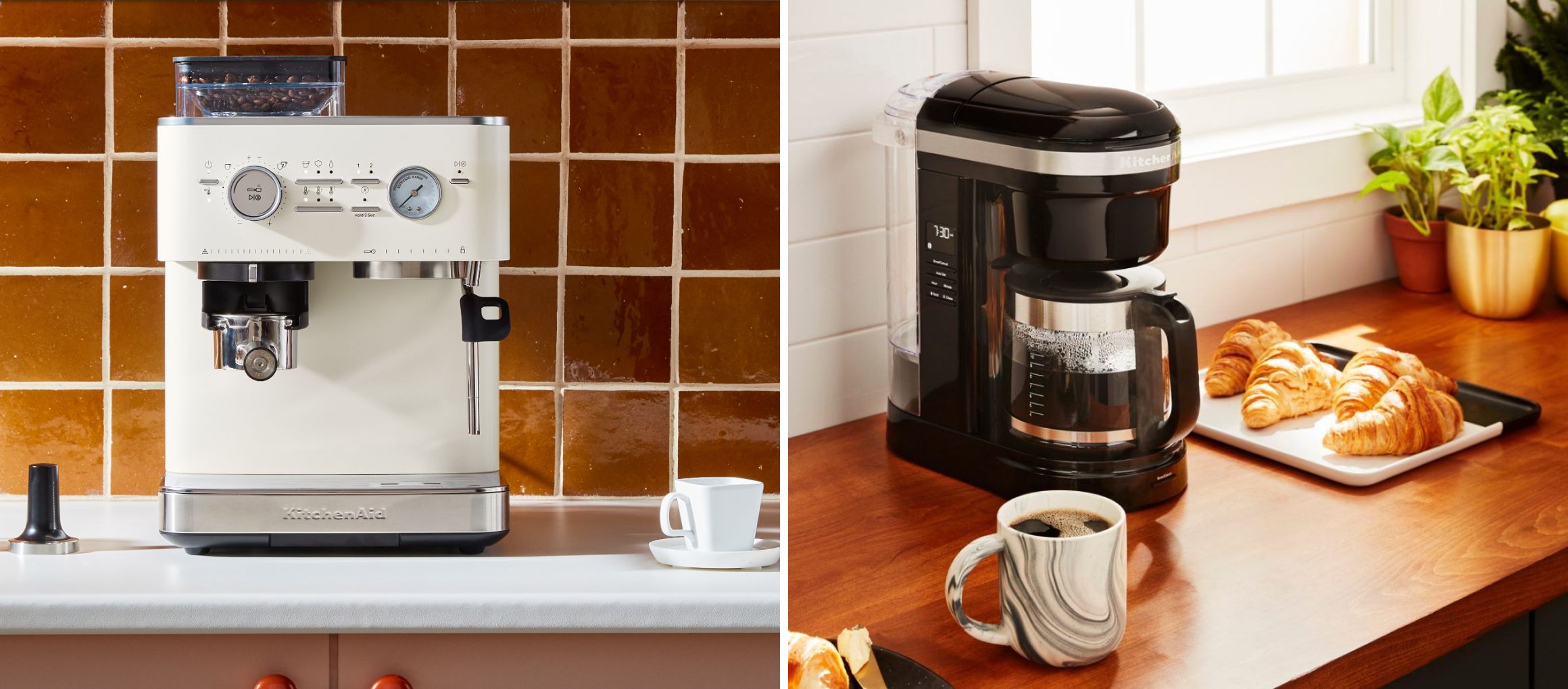
Credit: www.kitchenaid.com
Frequently Asked Questions
What Is The Difference Between Espresso And Coffee Machines?
Espresso machines use high pressure to brew concentrated coffee. Regular coffee machines use drip or percolation methods for milder coffee. This makes espresso machines ideal for strong, rich coffee, while coffee machines produce larger, lighter cups.
Can Espresso Machines Make Regular Coffee?
Most espresso machines focus on espresso shots but can make some coffee styles. However, their strength and brewing method differ from regular coffee machines. Some models offer added features to brew regular coffee, but traditional coffee machines excel in this area.
Are Coffee Machines Easier To Use Than Espresso Machines?
Yes, coffee machines are generally simpler to operate. They involve fewer steps and less technique. Espresso machines often require skill to grind, tamp, and extract coffee correctly. Beginners usually find coffee machines more user-friendly.
Which Machine Is Better For Home Use: Espresso Or Coffee?
It depends on your coffee preference. Espresso machines suit those who enjoy strong, concentrated coffee. Coffee machines are better for casual, larger coffee servings. Consider your taste, budget, and skill level before choosing.
Conclusion
Espresso machines and coffee machines serve different purposes. Espresso machines make strong, concentrated coffee. Coffee machines brew a milder, larger cup. Both can satisfy different taste preferences. Choosing depends on what coffee you enjoy most. Understanding these differences helps you pick right.
Now, you know espresso is not just coffee. Each machine brings its own flavor and style. Choose wisely to enjoy your perfect cup daily.
